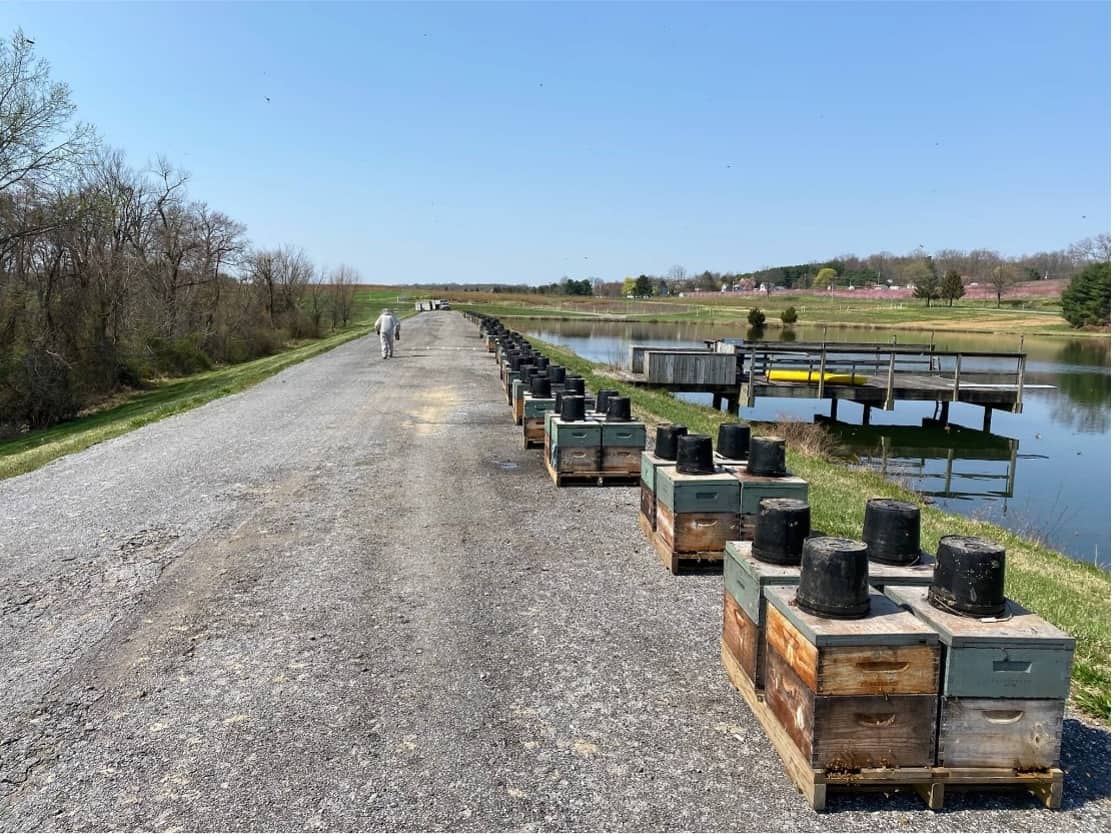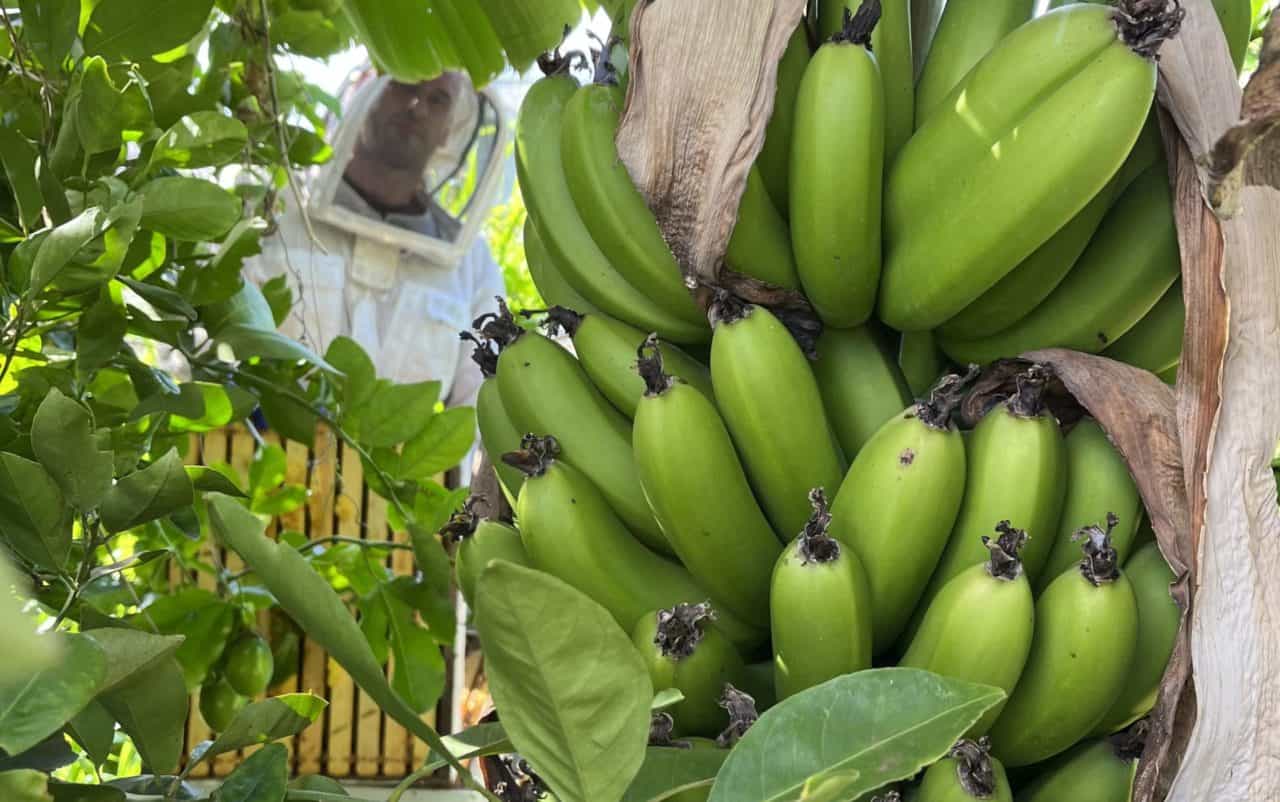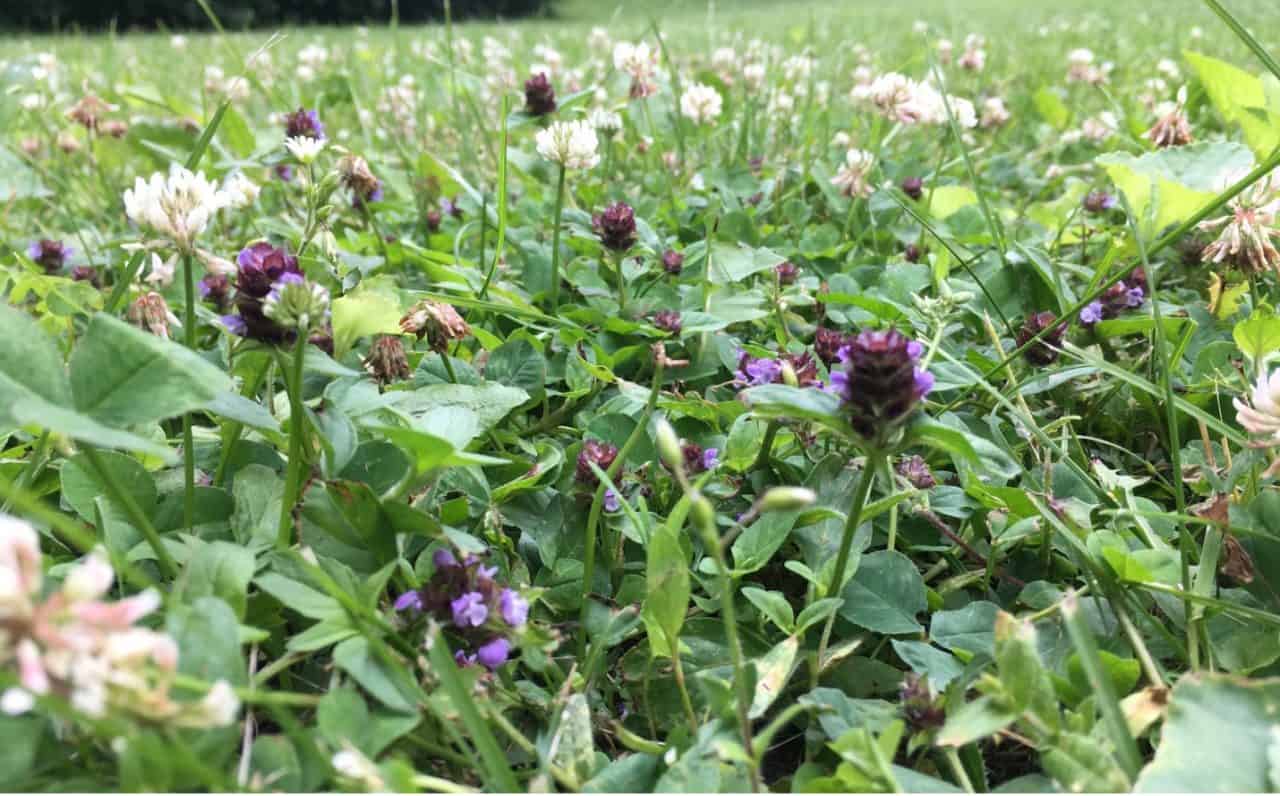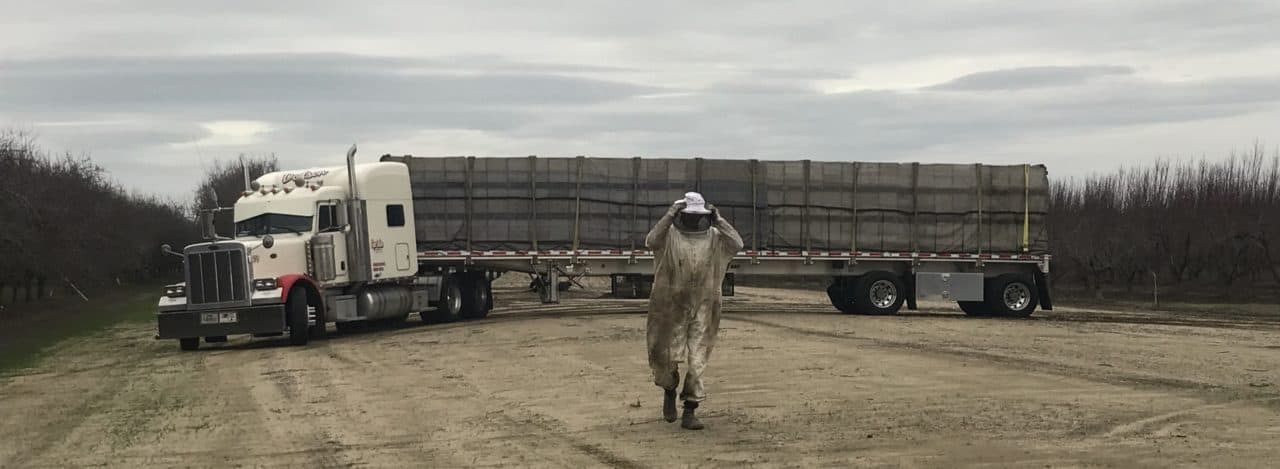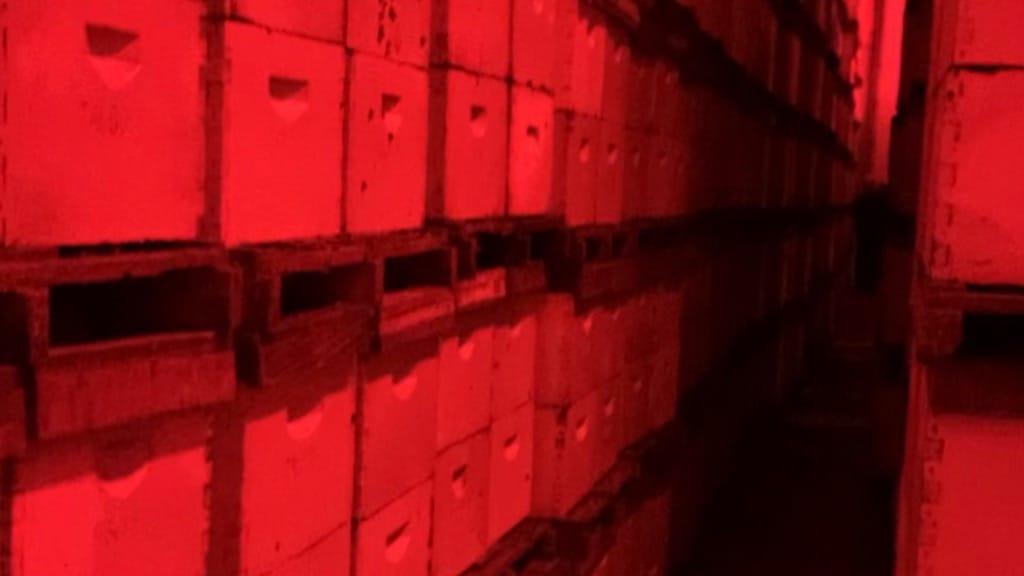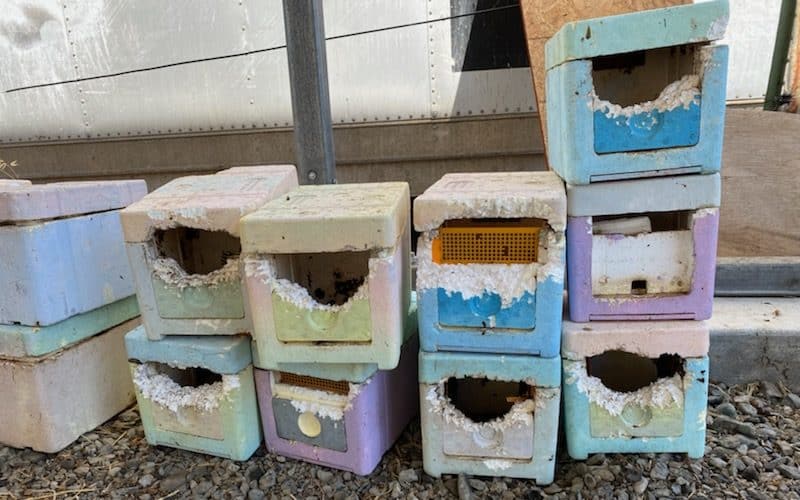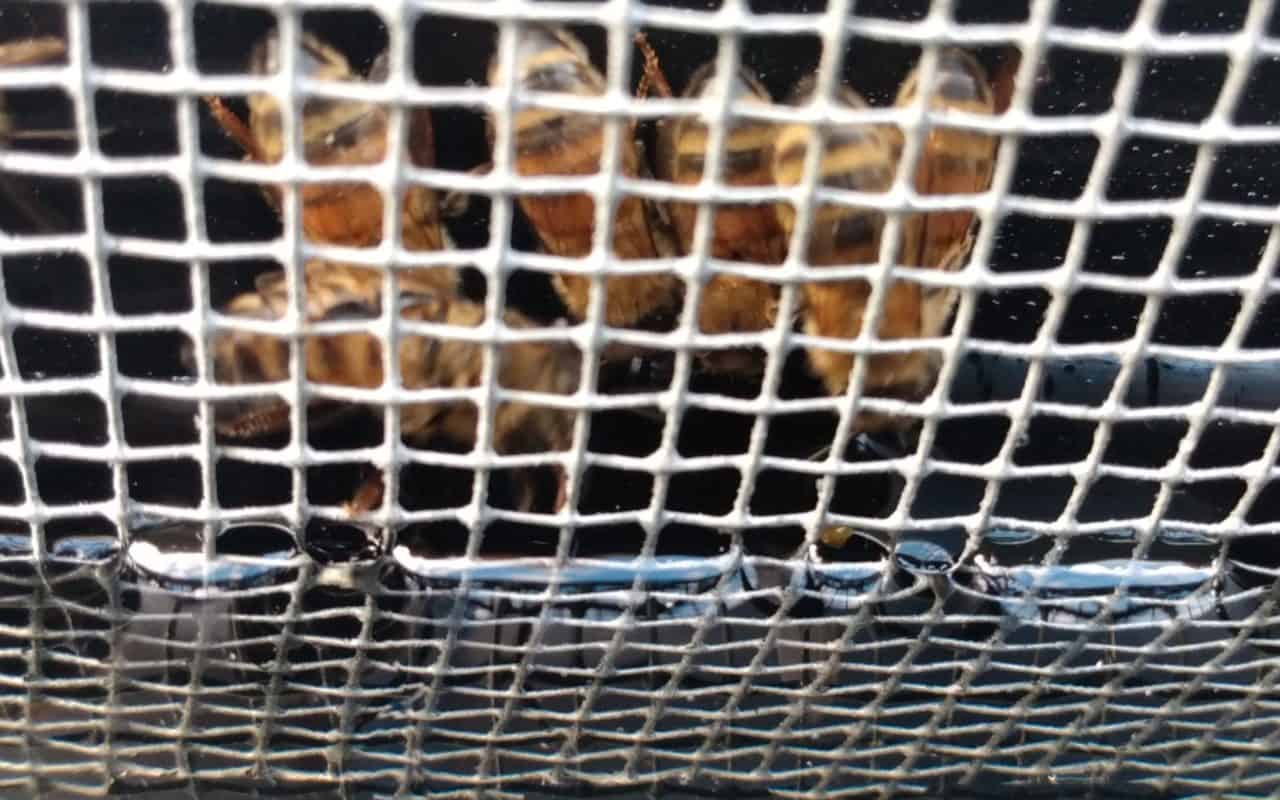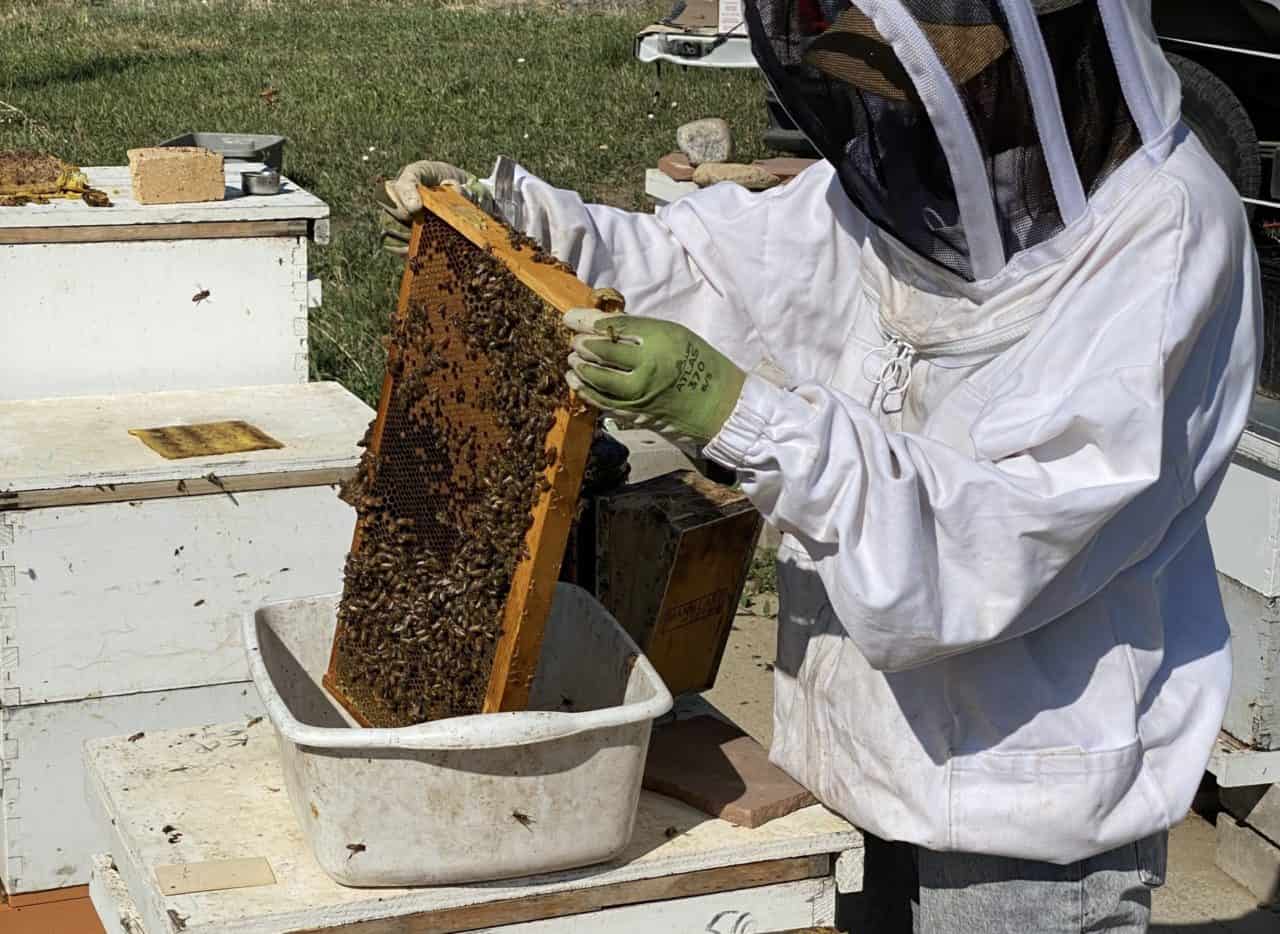The 2021-2022 Annual Loss and Management Survey is live on April 1st. New season, new survey! Our team is so excited to share with you our brand new survey. The survey is open from April 1 to April 30, 2022. Take the Survey Here! The Loss and Management Survey is a national effort that tracks long-term trends of U.S. honey bee colony health. The survey’s main objective is to monitor colony loss rates that beekeepers experience each year, the management actions that beekeepers take, and to compare these losses and practices among all types of beekeeping operations − from backyard hobbyists managing fewer than 50…
Category: Blog
The Bee Informed Blog is the place where team members convey their experience, knowledge, and opinions about their work with bees. Here is your opportunity to follow what’s happening in the field and lab.
Working Honey Bees in Hawai’i
Working bees in November in Hawai’i? YES, PLEASE! BIP Tech Team Field Specialist Ben Sallmann and I pounced on the opportunity to leave Minnesota and Michigan's dreary November weather. We tackled all of the logistical challenges and hopped on a plane to Hawai'i to conduct fieldwork for the state's contribution to the National Honey Bee Disease Survey (NHBS) . National Honey Bee Disease Survey The National Honey Bee Disease Survey (NHBS) is a federally-funded, nationwide, annual honey bee survey. This survey has been conducted since 2010 and is a joint effort between the U.S. Department of Agriculture’s Animal and Plant Health Inspection Service (APHIS) and…
Bee Lawns – Conserve Pollinators And Natural Resources In Your Own Home Lawn
Guest Blog Written By James Wolfin The turfgrass lawn has become a staple of American culture. To many, the desired lawn is a lush, green carpet that is cut low and weed free; maintained to draw the admiration of neighbors. We often go to great lengths to curate this aesthetic. Weekly mowing. Weekly watering. Herbicide applications to keep out undesirable weeds. Spreading fertilizer a few times per year to ensure the pristine green color that has become an expectation in some communities. But have we stopped to consider the ecological and environmental consequences of how we manage our lawns, and what alternatives there may be?…
Moving Bees Into Almonds
Every year, beekeepers from across the continental United States move millions of honey bee colonies to California’s Central Valley, arriving just in time to tend the billions of bursting almond blossoms that require their pollination services. But have you ever really thought about what it takes to accomplish this massive migration? Colonies from every corner of the country - many hunkered down in the dead of winter, or stacked in indoor, cold storage sheds - are prepped and loaded onto semis, hauled hundreds of miles, inspected at border stations, unloaded into temporary holding yards, and then relocated once more - strategically placed amongst the almonds…
Spending More Time Indoors Is What’s In Store For U.S. Honey Bee Colonies
In the dim, red glow of the immense warehouse’s lights, tall stacks of wooden boxes are lined up in seemingly endless rows, where they will stand for the next couple of months until spring returns to California. But this is not just a warehouse full of surplus beekeeping equipment, it is an indoor storage facility – and the boxes aren’t empty, but filled with live, honey bee colonies, waiting out the winter weather in this chilly, climate-controlled facility. Storing bees indoors over the winter months is not new in North America; for many years, some beekeepers in Canada and the northern US have kept colonies…
Highlights From The 2021 California State Beekeepers Association Annual Convention
This November, several BIP team members headed to beautiful Santa Barbara, California, to attend the California State Beekeepers Association Annual Convention. The convention site was right next to the beach, the weather was perfect, and beekeepers were primed for an amazing in-person meeting, after having to go a year without due to 2020 COVID-19 restrictions. For Anne Marie, Matt and Rob it was really good to visit with so many California BIP member beekeepers, and to meet a few new beekeepers too. We especially enjoyed talking shop – in the hallways at the convention by day, and in the evenings over a drink, under a…
Small Mammal Big Nuisance
One of the queen producers I work with, Joy Pendall, recently told me of some pest and flea problems she'd been having in a few of her yards. When she first told me about the damage these critters were causing I couldn't believe it - these mammals are not usually much of a pest for beekeepers to contend with, aside from occasionally chewing on the edges of bee boxes to wear down their constantly growing teeth. But Joy and her crew's stories and photos showed what an impressive amount of destruction that these little varmints managed to accomplish. The pictures (shared in this blog) show…
Feeding Bees – Top Feeders
Feeding colonies sugar syrup is something most beekeepers do, generally in the spring and/or fall. The purpose of feeding syrup can be to stimulate colony growth, sustain them through a dearth period, or build and maintain adequate stores for wintering. There are multiple methods for feeding syrup, each utilizing different pieces of equipment and having their own pros and cons. Previous blog posts discuss the use of gravity feeders and frame feeders, which are the two most commonly used feeders. A top feeder is a third method for feeding that is also a good choice under certain circumstances. As the name suggests, a top feeder…
Scooping Bees
To keep healthy bees, beekeepers must monitor their colonies for harmful pests and diseases. This commonly includes testing for the presence and abundance of Varroa, Nosema, and (less frequently) a number viruses and pesticides. To perform these tests beekeepers need to sample their bees. It is not that hard to sample bees, but doing it quickly and accurately is an acquired skill. Of course, there are many good methods for sampling honey bees, but most involve some form of scooping. Choosing a Frame Since all of these tests are performed using a small number of bees relative to the total number found in the colony,…
“Bamboo” honey
A colony of bees is capable of producing honey from a stunning variety of floral sources, but a few years back, when a beekeeper in New York told me his bees were in the midst of making a good fall crop on the bamboo, I was a bit puzzled. Knowing that bamboos belong to the grass family (Poaceae), I questioned a little further about how it was possible for bees to make honey from a grass, and the beekeeper pointed to a patch of dense, shrubby plants covered in white flowers and bees. Continued questioning eventually got to the answer that the “bamboo honey” was…
